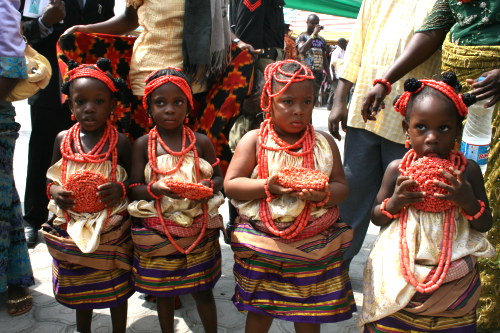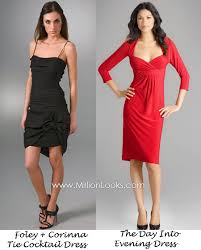Dress CodesThe Meaning of Dress Codes and What to Wear As the holiday season comes around, many people will begin receiving invitations to holiday parties of all kinds. In some cases, you'll know exactly what is expected of you as far as mode of dress. Let's be honest; your best friend's tree trimming party is easy to dress for, but what about that invitation to your boss' annual New Year's party at the Country Club that says "White Tie Required"? Or, do you know what dress is appropriate for a wedding where the invitation reads "Semi-formal attire is desired"?
The Tradition of Dress Codes:
The Dress Codes were created to help people know what was expected of them in a particular setting. It is a function of etiquette, those rules designed to help us interact comfortably with one another. The host of any given function would specify a dress code based on the atmosphere he or she was hoping to create for the event. And as your host or hostess was going to the time and expense of organizing and providing food and entertainment for your enjoyment, it was considered very bad taste to attend dressed inappropriately. The dress code allowed you to know what to wear, and more importantly, what not to wear.
Therefore, a hostess planning a function that wanted to be elegant and sophisticated could send her invitations and request that her attendees wear "Formal" attire. Doing this, she was assured that no one was likely to show up wearing something to ruin the atmosphere she has worked hard to create, and more importantly, something that would result in the wearer feeling uncomfortable for having chosen.
If you should ever receive an invitation to a function where there is no dress code suggested, yet you feel it is possible that your host intends for there to be a standard of dress, do not hesitate to call and ask for clarification. Your host will be grateful for your considerate gesture, and you will be much happier when you aren't over-or-underdressed.
   
Modern Adaptations of Dress Codes for Business:
Today, when most people hear the term dress code, they think of school or work and the clothing required for those environments. This is especially true for those persons in corporate environments. Decades ago, we had terms like "Blue collar", "White collar" and "No collar" jobs. "Blue Collar" jobs were those uniformed, labor-intensive, skilled, industrial jobs in machining, fabrication and manufacturing, and were called such because the typical uniforms were blue in color and were all nearly identical regardless of which company you worked for. "No Collar" jobs included unskilled work in retail sales, food service, janitorial service, and general laboring, the "uniforms" for these types of jobs were all varied depending on type of job and where you were employed. And then there were "White Collar" jobs. These were the professional jobs where the workers dressed in suits and ties or at least shirt and tie for lower-level positions.
"White Collar" jobs today have evolved from the strict "suit and tie" mode of dress and include less formal styles, like "Business Casual" and "California Casual". The Internet Boom and the Dot Com era created a demand for highly-skilled individuals who also tended to be highly-independent and creative. These individuals balked at the "cookie cutter" uniformity of the "Business Dress" environment and companies found that by relaxing the dress codes and adopting more casual attitudes about office attire, they could improve morale and increase productive.
  
California Casual - referring to business attire
For men and women, California casual means the same thing - anything goes. Jeans are the norm, as are t-shirts and polo-style pullovers. In summer months, shorts and sandals are even acceptable. California casual environments are rare outside of the American west coast, but have gained popularity, especially among companies specializing in software design and other areas of the Information Technology industry. However, even in a California casual environment, you should allow good taste to dictate your choices. Important client meetings and presentations would still call for long pants (even if only jeans) and a shirt with some buttons (even if only a pullover).

Casual - seen referring to social gatherings, business and dining
This environment is very informal. For both men and women, casual attire refers to clothing that is comfortable and appropriate to the setting and the occasion. For a beach party or backyard barbecue jeans, shorts and t-shirts are fine, but for an afternoon wedding you would still be better served with a pair of slacks and button-down shirt, or summer dress.   
Cocktail Attire - generally seen referring to social gatherings, and some fine dining
For men, cocktail attire means suit and tie, or coat and tie. Colors and fabrics may vary with the season or with the location of the event. (A cocktail party at a friend's place would be a little less dressy than one held in a nice hotel.)
For women, cocktail attire is the cocktail-length dress. Hair and make-up should be appropriate to the time of day (typically early evening) and the color and fabric of the clothing will likely vary with the season and location of the event.
 
Creative Black Tie - generally seen referring to social gatherings, and some fine dining
This is as formal of an occasion as the other black tie variations, but offers men the option to wear some of the trendier styles of tuxedo. Perhaps he might choose a black tuxedo shirt with a collar stud instead of a bow tie, or a brightly patterned vest or cumberbund.
For women, there is generally no difference in the creative black tie and other black tie variants, though it does allow for more daring and exotic styles of dresses.

Dress Casual - generally seen referring to social gatherings, and some fine dining
Think of dress casual as being the social variant of business casual. For men and women, the main rule of thumb is no jeans, and something slightly more conservative and 'dressier' than your standard business casual attire. For example, men should choose slacks and button up shirts over khakis and pullovers, while women should choose a nice pantsuit over separates.
   
Formal Attire - generally seen referring to social gatherings, and some fine dining
Formal attire follows the same rule as black tie for both men and women, although by not specifying black tie the option is available to be a little more creative if the setting is appropriate. (For example, wearing the tuxedo without a tie, or a woman wearing dressy separates as opposed to a dress.)
  
Informal - generally seen referring to social gatherings, and some fine dining
This environment is the same as casual. Just as with casual attire, informal refers to clothing that is comfortable, but still appropriate to the setting and the occasions.
|
 |

 |
 |
|
No comments:
Post a Comment